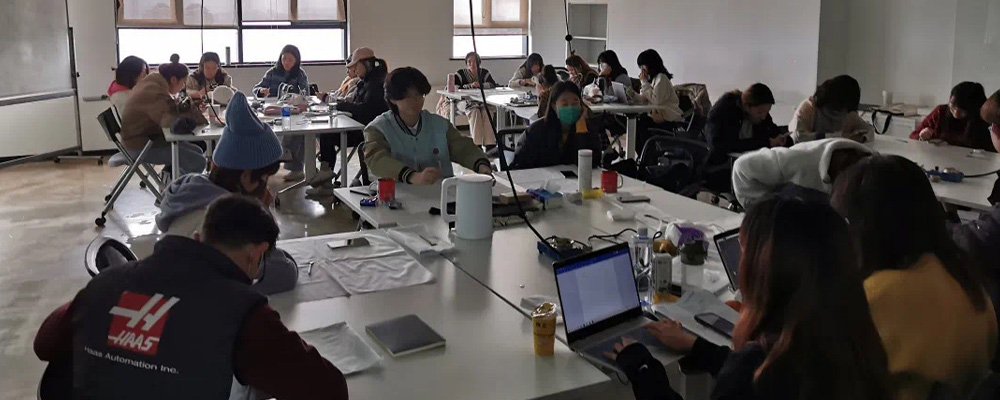



Batik Experience|Event Review
On December 7, BSM2018 students joined Mr. Hong Jingtao, the chairman of Guizhou Fuyuan Batik Art Co., Ltd. and its supervisor Mrs. Shangguan Daxin in holding an intangible cultural heritage experience event.
At the event, students had a virtual conversation with Mr. Hong Jingtao, who introduced the development of Guizhou Fuyuan Batik Art Co., Ltd. and shared the company's brand story.
Batik is a traditional Chinese textile printing and dyeing handicraft technique, which is also known as "wax relief", and has been practiced since ancient times. Batik is a process of using a wax knife to paint flowers on the cloth and then dyeing with indigo blue. After dyeing and removing the wax, the cloth shows a variety of patterns with blue and white flowers or blue flowers on a white background. The wax acts as an anti-dyeing agent. Furthermore, the wax pattern will naturally crack, giving the cloth a special "broken ice pattern". And the resulting final image is extremely impressive.
Guizhou Batik is mainly divided into two categories: Miao batik and Buyi batik. Miao Batik is practiced by 38 branches of the Miao ethnic group in Anshun. The dyed patterns are rich and colorful, depicting ancient legends and primitive beliefs, reflects the totem worship traditions of our ancient ancestors. It shows our ancestors' conception of the universe, featuring a reverence for such natural phenomena as mountains and rivers, as well as the longing for a better life. In 2008, the Batik technique became officially acknowledged as an example of national intangible cultural heritage.
In order to let students learn about batik, Mrs. Shangguan Daxin demonstrated how to perform the Batik method, as part of an online guided tour of the Anshun Batik Museum. He told us that, in 1992, the Fuyuan Batik Art Co., Ltd. was founded in Guizhou by Mr. Hong Fuyuan, a master of arts and crafts. To complement the commercial activities of his company, he founded the Fuyuan Batik Handicraft Workshop. Then, in order to promote the Chinese folk handicraft culture and expand the influence of Chinese Batik throughout the world, the Fuyuan Batik Art Workshop was upgraded to the status of Anshun Batik Museum in 2017, becoming the first self-financed Batik museum in Anshun.
After the video connection, BSM’s Year 3 students and their teachers began to make their own Batik works. And, promptly, two weeks later, they happily received their own Batik works.
Upon seeing the transformation of their plain white sheets into beautiful decorated blue canvases, everyone felt great satisfaction.
This is a truly flattering craft medium. It is a pleasure to help introduce it to a wider audience. The skills we have learned in teaching this technique can be extended to further Batik workshops or other project management exercises.





